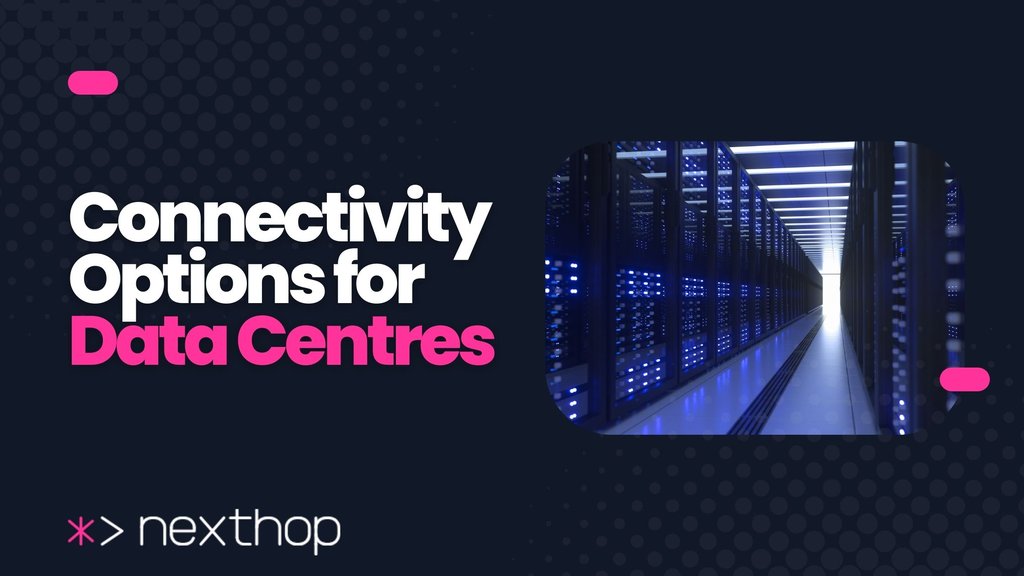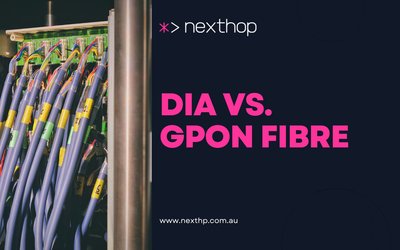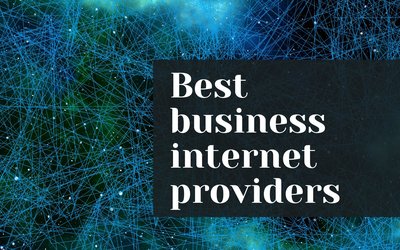In our modern age of technology, data centres are the bustling heart that keeps the internet working. Just like a city requires a well-designed transportation system, a data centre has a strong network connectivity. This article highlights the different options available and helps you in picking the most suitable for your needs. Data centres which are the crux of information technology framework require operational and reliable network communication. The paper assesses various options including, Ethernet, fibre optics among other technologies yet to come. We will also consider essential aspects when having to select the most appropriate connectivity option, the interactions with the user will also be explored.
Data Centre Network Connectivity
The Importance of Network Connectivity
Think of a data center as quite an active city in operation. Data flows through a server home like buildings, constantly having the information pumped out. In the interaction of servers with storage devices and the external world, provided by the high-speed network connection, network connectivity plays the role of the complex of roads and bridges. In data centers, network connectivity is critical since it affects construction vector, expansion possibilities, and performance. A proper configuration of the system helps transfer data across servers, storage systems and users in the right order and rather effortlessly.
Key Considerations for Data Centre Network Connectivity
Before you start racing to choose some ‘highway’ for your data centre’s network, these things must be kept in mind:
Bandwidth Requirements: How willing is your network to accept data? Do keep in mind activities that tend to be data intensive such as online transactions, video streaming, and data processing in real time. A good example is video streaming which involves transmitting videos over the internet, hence high bandwidth is needed since the material has to be sent over without any buffering.
Latency: It refers to the distance and time needed by a server to send or receive data from another server in the same location or in another location. In instances where time is of the essence, for instance in online gaming or high-frequency trading, low latency is a prerequisite. Since latency matters even slightly for gaming type of businesses, a lot of money is spent on low latency networks.
Security: What is the rate of how much sensitive information is stored in your data centre? There is a high need for security measures so as to prevent unauthorized users from gaining access to confidential information. Measures to protect sensitive data are optimally implemented by companies like Amazon web services.
Cost: The pricing of the centre network solution varies in cost. It is important to consider the original hardware purchase price, maintenance costs, and potential savings from increased efficiency. Comprehending the entire cost of ownership eliminates uncertainty for businesses, facilitating satisfactory decision-making. For instance, a startup would choose to go with an Ethernet solution that is comparatively inexpensive and has room for expansion.
Types of Network Connectivity
To maintain dependable and effective operations, data centers rely on a variety of network connectivity solutions. Fibre optics is a technique that uses light pulses to carry data across great distances with low latency and high bandwidth. Ethernet is a standard for wide-area and local area networks that allows varying speeds and dependable data sharing. 5G and optical networking are examples of emerging technologies that promise even faster data transfer, and quantum computing is a potentially game-changing technology. A number of factors, including cost, security concerns, latency requirements, and bandwidth requirements, influence the choice of network connectivity.
Fibre Optics: The Backbone of Data Centre Networks
Understanding Fibre Optics
Fibre optics is a technology that enables long-distance data transmission by light. Light pulses are sent through a thin, flexible glass or plastic fibre to operate. Ones and zeros and other digital data are represented by these light pulses.
By acting as a waveguide, the fibre keeps the light from escaping its confines. Because of this, light may now travel great distances without experiencing a noticeable reduction in signal quality.
Compared to conventional copper-based cables, fibre optics have a number of benefits, such as increased bandwidth, increased transmission distances, and immunity to electromagnetic interference. Because of this, it is perfect for uses like data centres, telecommunications, and high-speed internet.
Benefits of Fibre Optics
When comparing fiber optics to traditional copper-based lines, some significant advantages can be observed. Their considerably higher data transfer rates are ideal for applications involving cloud computing and video streaming. Moreover, fiber optics' lower latency allows for faster data transfer over longer distances, which is crucial for real-time communication applications like audio and video conferences. They are also well-suited for use in long-distance communications networks because to their capacity to carry data over long distances without detectable signal loss. Lastly, because fiber optic cables are immune to electromagnetic interference, they provide a more dependable and noise-free transmission than copper connections. Fiber optics are currently frequently used as the standard solution for modern communication networks due to these advantages.
Types of Fibre Optic Cables
Fibre optic cables come in two primary varieties: single-mode and multimode.
A single light beam is intended to travel down the core of a single-mode fibre. Longer transmission times and larger data rates are made possible by this. In long-haul networks, such those that link cities or nations, single-mode fibre is frequently utilized.
Multiple light beams can go down the core of a multimode fibre. This restricts the amount of data that can be transferred over longer distances but also makes higher bandwidth possible. In shorter-distance applications, including those inside buildings or data centres, multimode fibre is frequently utilized.
The particular needs of the application will determine whether single-mode or multimode fibre is best. Single-mode fibre is a superior option, for instance, if high data transfer rates and lengthy distances are required. Multimode fibre, on the other hand, might be more appropriate if a greater bandwidth is required across shorter distances.
Experience the Power of Nexthop`s Agile and Reliable Telecommunication Solutions
Contact Us Today and Future Proof Your Business Connectivity
Sydney
/
Melbourne
/
Brisbane
/
Perth
Ethernet: A Versatile Connectivity Option
What is Ethernet?
With the help of the Ethernet standard, devices on local area networks (LANs) and wide area networks (WANs) can speak to one another using a common protocol. It offers a dependable and effective method of data and resource sharing for PCs, servers, and other network devices.
When numerous devices try to transmit data at the same time, Ethernet utilizes the carrier sense multiple access with collision detection (CSMA/CD) protocol to prevent collisions. A device waits an arbitrary period of time after detecting a collision before attempting to transmit once more. This makes it easier to guarantee error-free, successful data transmission.
Ethernet is extensively utilized in residences, workplaces, and educational settings. It is a flexible technology that works well in many different kinds of network settings.
Ethernet Standards and Speeds
There are several Ethernet standards, such as:
10BaseT: Provides up to 10 Mbps of speed.
100BaseT: Supports up to 100 Mbps at.
1000BaseT: Up to 1 Gbps of gigabit speed is available with.
These guidelines give businesses the flexibility to select the right pace for their particular requirements.
Ethernet in Data Centres
For data centres, Ethernet—a popular networking standard—is a dependable and affordable option. It functions similarly to a multi-lane, variable-speed freeway. Similar to differentiating speed restrictions on different roadways, standards like as 10BaseT, 100BaseT, and 1000BaseT offer variable data transmission rates. Select the one that best meets your needs for data transfer. Because of its adaptability, Ethernet is perfect for server-to-server communication, allowing servers in the data centre to exchange data effectively. Additionally, it makes communication between servers and storage devices easier, guaranteeing dependable data retrieval and storage. Moreover, Ethernet offers improved connection and a broader range of application when connecting various data centre networks.
- Server-to-server communication: Ensuring efficient data transfer between servers.
- Server-to-storage connectivity: Facilitating quick access to stored data.
- Network-to-network interconnections: Connecting different networks within the data centre for streamlined operations.
Emerging Technologies: 5G and Beyond
5G for Data Centres
Picture a metropolis brimming with electronic apparatuses such as automated vehicles, traffic signals, and surveillance cameras. In real time, these gadgets produce enormous volumes of data. This data may not be processed rapidly enough by traditional data centre connectivity, which could cause delays and inefficiencies.
However, these devices can link straight to an adjacent edge data centre with 5G. This lowers latency and speeds up response times by enabling local processing of the input. To ensure safer and more effective mobility, a self-driving car, for instance, may get real-time traffic updates and make judgments right away based on the information.
Other Emerging Technologies
Other cutting-edge technologies, in addition to 5G, could also have an impact on data centre network connectivity:
Optical networking: By leveraging complex optical processes, this cutting-edge technology offers significantly higher data transmission speeds. With greater bandwidth and lower latency, it has the potential to completely transform long-haul data centre communication.
Quantum computing: Although it is still in its infancy, this technology has the power to revolutionize data centre networks. Its capacity to manage intricate data processing jobs may result in important developments in fields like cryptography, machine learning, and artificial intelligence.
Choosing the Right Network Connectivity Option
Assessing Network Requirements
Fibre optic communication uses light as a means of long-distance, minimally lost data transmission. Because this technology allows for quicker data transfer rates than traditional copper lines, it has completely changed the way data centres function. For instance, a healthcare provider must prioritize secure connections due to sensitive patient information being transmitted.
High Bandwidth: Able to handle massive volumes of data flow at once.
Minimal Latency: Crucial for applications needing instantaneous answers.
Long Distances: Without deterioration, fibre optics can send data across several kilometers.
Immunity to Electromagnetic Interference: Fibre optic connections are stable because they are immune to electromagnetic interference, in contrast to copper cables.
Cost-Benefit Analysis
A cost-effectiveness analysis of various choices must take into account both initial and recurring expenses. When making decisions on the network infrastructure of their organizations, they should consider the possible savings from increased efficiency or decreased delay.
Hybrid Approaches
Hybrid network architectures that integrate many technologies are advantageous to numerous enterprises. To maximize efficiency and minimize costs, a business could, for instance, utilize Ethernet for internal communications and fibre optics for core connections.
Staying updated on emerging trends in data centre network connectivity is crucial for organizations to adapt their strategies and ensure reliable operations in an ever-changing digital landscape. New technologies like 5G, optical networking, and quantum computing could reshape the landscape, making it essential for data centre managers to stay informed.
To learn more about how Anticlockwise can help you navigate the complexities of data centre network connectivity, contact us today.





